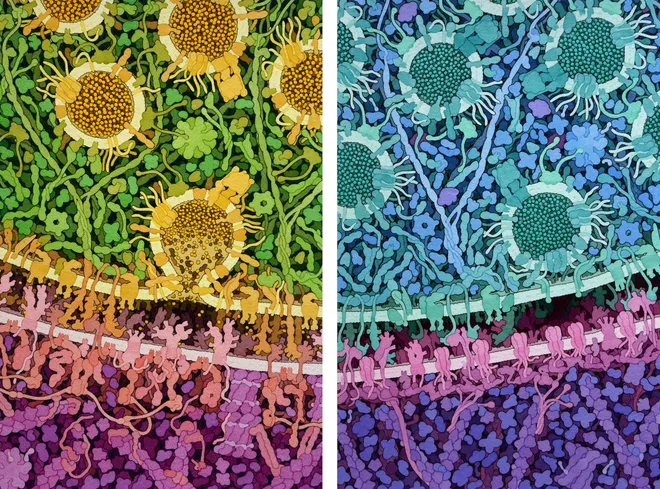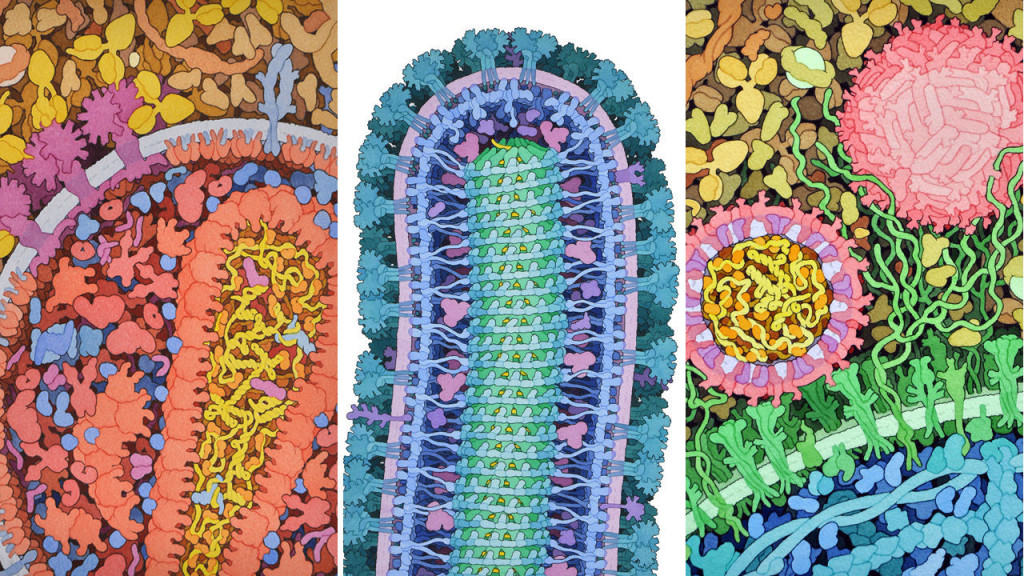Monday, 14 December 2020
Using science to create art.
 Some scientists use science to create art. One good example is Greg Dunn, a neurobiologist and visual artist. They are a startling combination of the precise images captured by neuron-imaging technology and the traditional techniques of Japanese ink-wash painting, also known as sumi-e.
Some scientists use science to create art. One good example is Greg Dunn, a neurobiologist and visual artist. They are a startling combination of the precise images captured by neuron-imaging technology and the traditional techniques of Japanese ink-wash painting, also known as sumi-e.
More recently, I have discovered the impressive image of David Goodsell, who transforms deadly viruses into stunning works of art. Goodsell is a biologist who studies the molecular structure of cells at Scripps Research in San Diego, California. The watercolours that he paints with such precision represent the molecules that compose human cells and the bacteria and viruses that attack them constantly (such as the HIV, Ebola and Zika viruses below, as well as coronaviruses).

Like Dunn, Goodsell create his paintings using data obtained with leading-edge technologies such as electronic microscopy, X-ray crystallography, and nuclear magnetic resonance spectroscopy. Goodsell’s genius consists in the way that he interprets the sometimes cryptic molecular images that these technologies provide and shows us their complex, tangled patterns through his palette of different colours (for example, the images at the top of this post represent two synapses at two different moments in the process of synaptic transmission). As Goodsell says himself, “I’m not making editorial images that are meant to sell magazines. I want to somehow inform the scientists and armchair scientists what the state of knowledge is now and hopefully give them an intuitive sense of how these things really look—or may look.”
Goodsell stresses that he necessarily takes a lot of artistic liberties to represent this microscopic world. For example, although most proteins do not really have any colour, he gives them colours so that viewers can clearly distinguish them. He also stresses the highly dynamic nature of what he has captured in each of his still images: “They’re just one snapshot of something that’s intrinsically superdynamic. Every time I do a painting, the next day it’s out of date because there’s so much more data coming out.”
People like Janet Iwasa, who uses computers to generate molecular animations, consider Goodsell to be in a sense the father of their discipline. Iwasa is constantly seeking accurate data on the strangely shaped molecules that she wants to depict. That said, while there is often something a bit “cold” about computer-generated images, that coldness is not apparent in Goodsell’s work. I leave the final word to Iwasa, who eloquently expresses the theme of this post: the intimate connections between art and science, between creativity and cognition:
I like the way his paintings look like they’re created by a human being. They’re reminiscent of the fact that science is done by humans, by scientists, and it’s less something that’s a complete fact, but something we’re envisioning, a hypothesis in the human mind. The hypothesis of what’s inside a human cell is a human creation.
From the Simple to the Complex | Comments Closed







